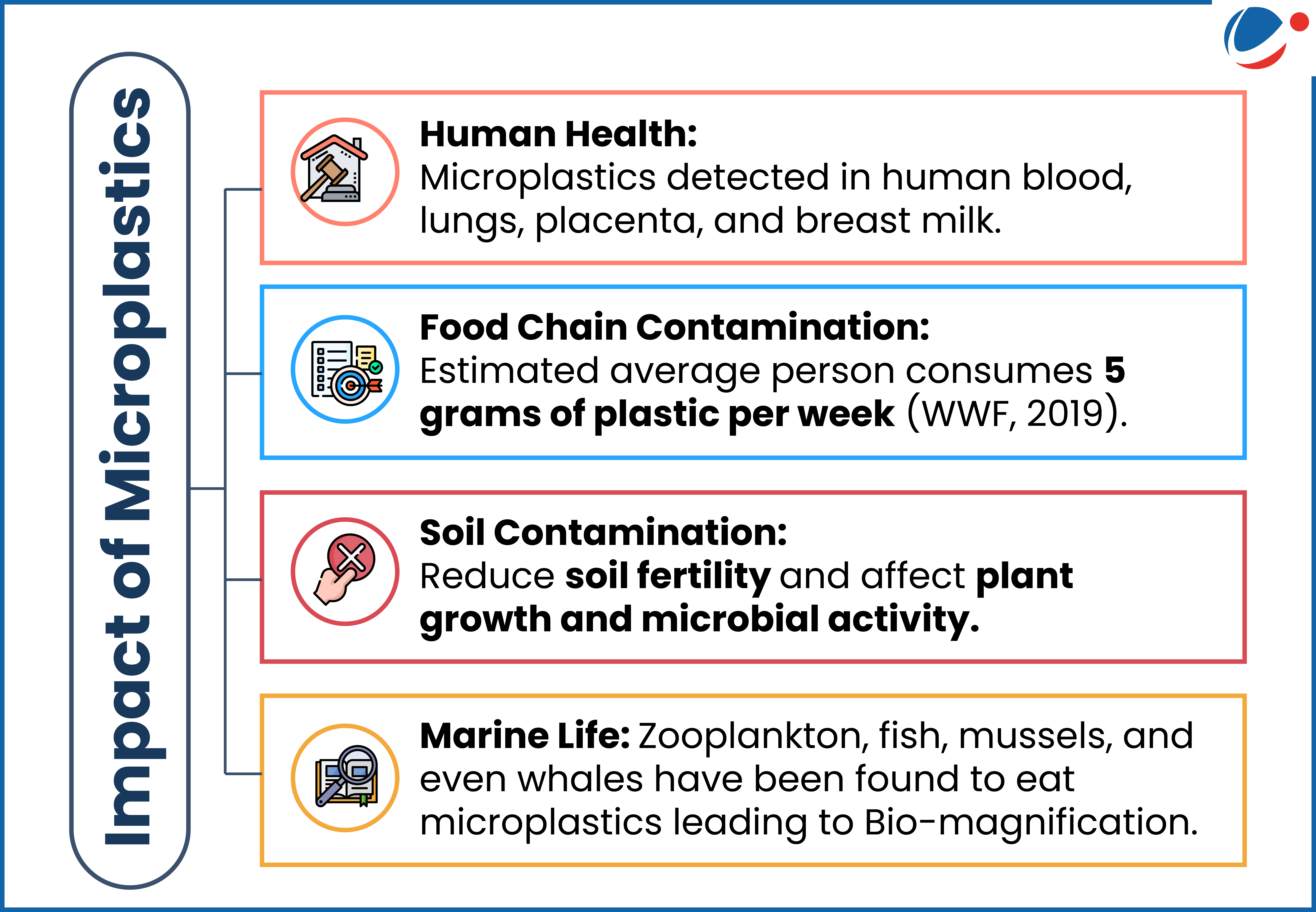The study published in Nature, showed Plastic particles enter plant leaves through surface structures such as stomata (small pores formed by specialised cells, called guard cells) and cuticle (protective membrane coated in wax).
- Research found Polyethylene terephthalate (PET) and Polystyrene (PS) are among the most common polymers present in plant tissues.
- PET is used in beverage bottles and food containers; PS is used in disposable cutlery, cups, etc.
About Microplastics

- Definition: Plastic particles up to 5 millimeters in diameter are called Microplastics. Nanoplastics are less than 1,000 nanometers.
- Characteristics of Microplastics
- Microplastics are persistent & are highly mobile and difficult to remove.
- Microplastics have Large Surface Area to Volume Ratio: As surface area increases, microplastics adsorb (attract and hold substances) more contaminants and become more prone to fouling.
- Microplastics often contain chemical additives that accumulate in water bodies over time: E.g., Bisphenol A (BPA), Brominated flame retardants, Per- and polyfluoroalkyl substances (PFAS)
- Types of Microplastics:
- Primary Microplastics: Intentionally manufactured small plastics. E.g. Plastic pellets (used in manufacturing), Microbeads in personal care products (e.g., toothpaste, face wash, cosmetics) etc.
- Secondary Microplastics: Result from the breakdown of larger plastic items. E.g. Microfibers, made of synthetic fibers like polyester or nylon.






